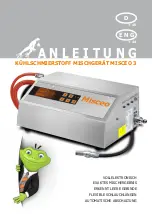
A navigation system marks a route to a destination or
destinations on a map, guiding the user along the route
to the destination.
Vehicle positioning system
GPS (Global Positioning System)
The positioning system uses communications satellites
launched by the US Department of Defense. Signals are
received from three or more satellites orbiting at 21 000
km altitude, and the principle of triangulation is used to
fi nd the position.
By receiving GPS signals, this system can position the
vehicle within a margin of error of 30 to 200 m.
Time before the current position is found
When this system is used for the fi rst time, or if it
has not been used for an extended period, it may take
as much as 5 minutes to fi nd the current position. In
normal conditions, at a location with good reception,
positioning takes around 2 minutes.
Starting to move the vehicle immediately after turning on
the power causes it to take longer to fi nd the position, so
the user is advised to remain parked in a location with
good reception (with no buildings or trees to block the
signals from GPS satellites) until the current position is
found.
Locations where GPS signal reception
is diffi cult
Reception may not be possible in locations such as the
following:
In tunnels
Between tall buildings
Under elevated roads
Between trees
Map matching
This function displays the vehicle position obtained from
GPS, the gyro sensor and other sources on the map.
What is a navigation system?
Vehicle positioning precision
The vehicle mark position may not be displayed
correctly due to the driving environment and the
GPS satellite status.
Continue driving without taking further action, and the
map matching function and GPS satellite data will be
used to automatically correct the vehicle mark position.
When a highway and an ordinary road are close
together
When driving through a fork junction with a narrow
angle between roads
When driving on roads in a block grid pattern
After moving on a ferry, car transporter, etc.
When driving on steep mountain roads
When driving on winding roads
When turning right or left after driving on a straight
road for a long period
When driving in a weaving motion on a wide road
The vehicle mark position may not be displayed correctly
in the following additional situations:
Between turning the ignition switch on (after turning
the power on) and receiving GPS signals.
When driving for the fi rst time after installing this
system.
After changing a tire, particularly when driving on an
emergency tire.
When driving on roads that are slippery due to snow,
gravel etc., or when driving with tire chains.
When the vehicle emerges onto a normal road after
driving on a spiral route out of an underground or
multi-story parking lot, or when the vehicle was turned
on a turntable after stopping the engine (turning the
power off).
GPS satellites are under the control of the US
Department of Defense, which may deliberately reduce
positioning precision. In such situations, the vehicle
mark not refl ect the actual position of the vehicle.
Route searching
The following situations do not indicate a
malfunction:
Some roads may be impassable, such as roads closed
in winter or temporarily closed for pedestrian.
When searching for a route through narrow streets,
the route may include impassable footpaths or stairs.
Some roads may be impassable, due to opening of a
new road.
Roads may be displayed which are not actually
passable.
The route may not change even when the search is
repeated.
The route may be congested.
If there is no road or only very narrow roads to the
destination, the route may only be displayed to a point
some distance from the destination.
Guidance may lead to an ordinary road under an
elevated road. The reverse can also happen.
A route may be displayed which makes a U-turn.
Route guidance
The following situations do not indicate a
malfunction:
Guidance may not be displayed even though a turn is
required at an intersection. Guidance of the name of
the intersection may not be provided.
Guidance for left or right turns may not match the
actual shape of the road.
Voice guidance may be provided when the vehicle
deviated from the guidance route, for example, turning
before the guided intersection.
It may not be possible to display/provide audio
direction guidance on some highways and toll roads.
The Enlarged intersection map may not match the
actual road shape.
The guidance distances may be slightly inaccurate.
Road on the map
data
Route trace derived from sensors
Actual path
Screen display
Point corrected by map matching
English
English
110
111
111
110
Содержание CN-NVD905U - Strada - Navigation System
Страница 117: ...Memorandum 343 ...








































